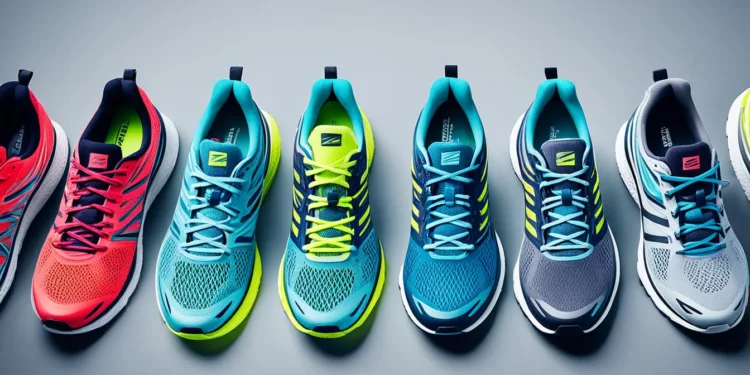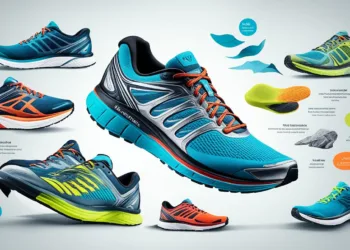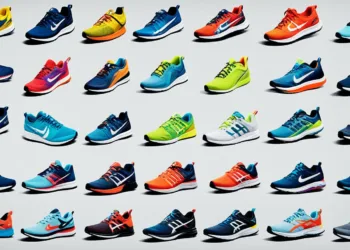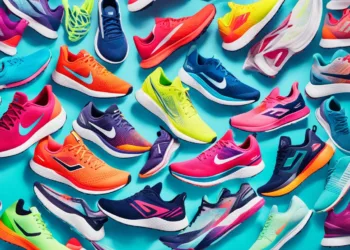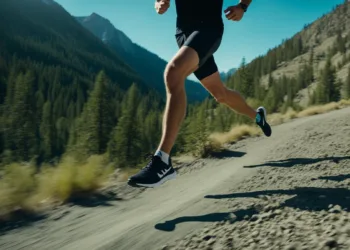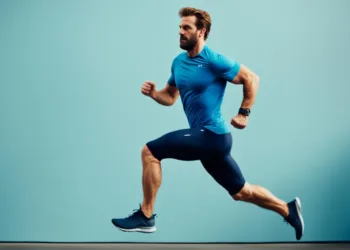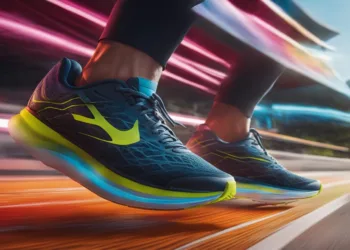Table of Contents
- 1 Introduction to Personalized Lacing
- 2 Running Shoes Lacing Techniques for Enhanced Performance
- 3 Running Shoe Lacing Styles Tailored to Your Foot Type
- 4 Best Ways to Lace Running Shoes for Specific Issues
- 5 Tips for Lacing Running Shoes for Comfort and Durability
- 6 Caring for Your Running Shoes and When to Replace Them
- 7 Altra Lacing Method: A Comprehensive Guide
- 8 Mastering the Art of Lacing Running Shoes
- 9 Lydiard Lacing Technique: A Closer Look
- 10 The Science Behind Running Shoe Lacing Techniques
- 11 New Balance Lacing Techniques: What You Need to Know
- 12 Conclusion
When it comes to running, the specific way you lace your running shoes can significantly enhance your running comfort and performance. By adopting various Running Shoes Lacing Techniques, you can address and correct issues like heel slippage and blisters, which are all too familiar within the running community. Whether you need a tighter hold to eliminate heel slippage or a roomier fit for a wide forefoot, understanding how to customize your running shoe lacing styles can be a game-changer.
Key Takeaways:
- Personalized Lacing: Introduction to custom-fit lacing.
- Performance Enhancement: Techniques for improved running.
- Foot Type Styles: Lacing styles for different foot types.
- Specific Issues: Lacing solutions for common problems.
- Comfort and Durability: Tips for comfortable, long-lasting lacing.
- Shoe Care: When and how to replace shoes.
- Altra Method: Comprehensive guide to Altra lacing.
- Mastering Lacing: Art of perfect running shoe lacing.
- Lydiard Technique: In-depth look at Lydiard lacing.
- Science of Lacing: Understanding the science behind lacing.
However, if issues persist despite custom lacing for running shoes, it’s advisable to consult a medical professional to avoid any severe foot problems. Remember, it’s not only about running faster, further, or more Optimal comfortably. It’s about promoting maximum foot health and preventing potential injuries. So, join us to explore these simple yet effective tips for lacing running shoes and witness a significant improvement in your running experience.
“Read more: Running Shoes Lifespan: Extending Your Shoes’ Durability“
Introduction to Personalized Lacing
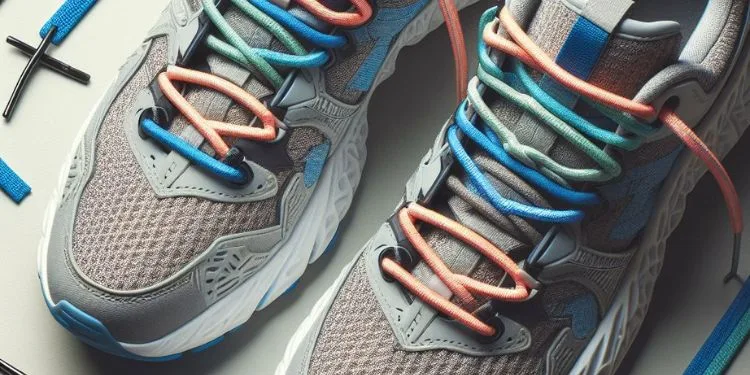
Starting the journey of personalized lacing begins with returning to the very base of your running shoe delacing. Once you’ve successfully unstrung the laces, paying close attention to the default lacing patterns is crucial. Frame your decision on whether to follow the preset pattern or switch it up with a new, unique lacing method. This should ideally be based on specific requirements of your foot’s anatomy and comfort levels.
Intricacies of foot structure vary from one individual to another, making it imperative to explore different running shoe lacing methods. These alternative lacing techniques relieve unnecessary pressure in particular regions, improving comfort and allied support. This could potentially aid in averting possible injuries induced by the wrong choice of lacing technique.
Investing time in trial and error can steer you towards finding the lacing pattern that is best suited to your feet’s form and framework. This approach might seem iterative but ultimately marks the difference between a good and great run.
| Steps | Instructions |
|---|---|
| 1 | Unlace your running shoes completely. |
| 2 | Analyze the default lacing pattern. |
| 3 | Consider your foot’s comfort and structure while sticking with the default pattern or moving onto a new one. |
| 4 | If moving onto a new lacing pattern, look into different running shoe lacing methods to compensate for any discomfort from pressure points. |
| 5 | Test out various methods, taking note of the level of comfort, ease, and support each method provides. |
| 6 | Once the optimal lacing technique is determined, repeating the chosen lacing pattern before every run will ensure consistent comfort and support. |
“Read more: Running Shoes Recycling: Eco-Friendly Disposal Options“
Running Shoes Lacing Techniques for Enhanced Performance
Understanding different lacing techniques is critical in improving fit and performance during your runs. Each method serves its purpose: to secure foot placement, alleviate foot pressure, or even comfort your toes.
Heel Lock Lacing for Secure Foot Placement
One such method is the Heel Lock Lacing. This technique focuses primarily on securing foot placement, preventing the heel from slipping. It involves lacing up in the standard criss-cross fashion until you reach the second-to-last eyelet, creating loops between the last two, and then crossing the laces through them. This method secures your heel and prevents loosening your laces during your run.
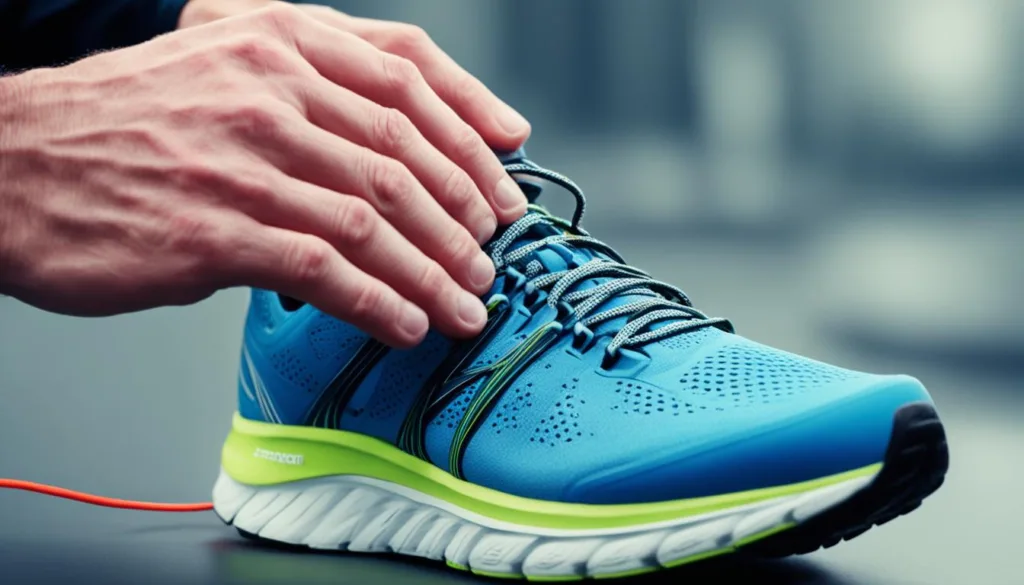
Parallel Lacing to Alleviate Foot Pressure
Another method worth knowing is Parallel Lacing or straight bar lacing. This technique offers relief if you often feel your shoe constricting the top portion of your foot. It involves skipping alternate eyelets for each lace and running the lace up the side of the shoe. The result is an evenly-dispersed lace tension, which reduces discomfort, ensuring the shoe’s fit adapts appropriately to the size and width of your foot.
Single Helix Lacing for Toe Comfort
Single Helix Lacing can work wonders to address the toe discomfort. You start lacing from the eyelet near your big toe to the top eyelet on the opposite side. This creates a diagonal lace cross over the entire shoe, giving your toes some well-deserved breathing space and effectively lifting the toe box. The lace on the other side is crisscrossed in the standard way for balance and comfort.
| Lacing Technique | Benefit |
|---|---|
| Heel Lock Lacing | Secure Foot Placement |
| Parallel Lacing | Alleviation of Foot Pressure |
| Single Helix Lacing | Improved Toe Comfort |
When applied correctly and according to your foot’s requirements, each technique can drastically enhance your running experience. The broader your understanding of these methods, the better you handle any discomforts or problems you might encounter during your runs. So, keep these tips for lacing running shoes in mind and continue striving for improved fit and comfort.
“Read more: Running Shoes Tread Wear: Maintaining Optimal Grip“
Running Shoe Lacing Styles Tailored to Your Foot Type
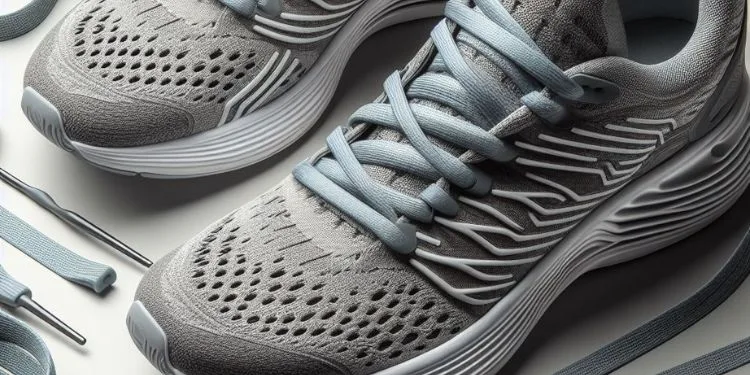
Customizing your shoe lacing technique to your foot type can significantly improve your running experience. Each foot type has specific needs that can boost comfort, enhance performance, and prevent injuries when addressed with the appropriate lacing style. Whether you have high arches, a wide forefoot, or a narrow foot type, an optimal lacing style awaits you.
If you have high arches, the pressure can be reduced by looping the laces on the sides for the middle section. This technique provides ample space for your arch and minimizes pressure points.
- Unthread the laces from the middle eyelets of your shoes.
- Re-thread the laces sideways through the next set of eyelets, bypassing the middle ones. This will create loops on the sides.
- Continue lacing the shoe as usual above and below this point.
Runners with a wide forefoot can create more space in the toe box area by threading the shoelace only through the sides and then crisscrossing from the midfoot onwards.
- Start by threading the shoelace only through the first few pairs of eyelets on the sides.
- Once you reach the shoe’s middle, start threading the laces across to the other side, creating a criss-cross pattern.
- Ensure the laces are evenly spaced and not too tight to avoid limitations on the toe movement.
For those with narrow feet, tighter lacing is imperative for better stability. Conversely, runners with wide feet may benefit from loosening the lacing pattern and skipping certain eyelets to guarantee a more comfortable and accommodating fit.
| Foot Type | Lacing Style | Technique |
|---|---|---|
| High Arches | Looping on Sides | Loop the laces on the sides for the middle section to reduce pressure on the arch. |
| Wide Forefoot | Sides and Criss-cross | Thread the shoelace only through the sides and then start crisscrossing from the midfoot onwards to create more space in the toe box. |
| Narrow Feet | Tighter Lacing | Lace the shoe tighter across its entire length for better stability. |
| Wide Feet | Looser Lacing and Skipping Eyelets | Loosen the lacing pattern and skip certain eyelets for a more comfortable fit. |
Furthermore, runners with a high midfoot can alleviate pain by skipping middle-lacing crisscrosses and threading only through the sides at the point of discomfort. It’s worth noting that whatever your foot structure is, striking a balance between firmness and flexibility in your running shoe lacing styles is vital to an enjoyable and safe running experience.
“Read more: Running Shoes Storage: Ideal Ways to Keep Your Shoes“
Best Ways to Lace Running Shoes for Specific Issues
Each runner’s feet are unique, as are their needs when finding the best ways to lace running shoes. Understanding how different running shoe lacing methods can solve specific issues is crucial to achieving the perfect fit. With innovative running shoe lacing ideas, people with wide forefeet or narrow feet can advance their comfort and update to better running performance.
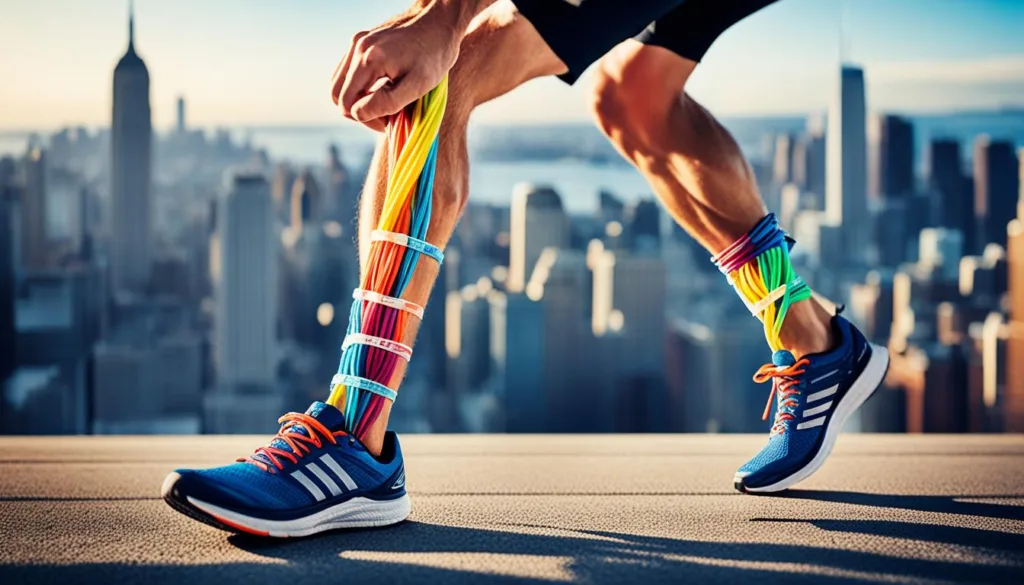
Lacing Techniques to Prevent Heel Slippage
For runners who experience constant heel movement mid-run, a specific lacing technique to prevent heel slippage can be implemented. Heel-lock or marathon loop lacing provides a snug fit around the ankle. This lacing technique threads the laces into additional loops at the top of your shoe tightly, keeping the heel secure without causing undue pressure.
Custom Lacing for Wide Forefoots and Narrow Feet
Individuals with wide forefeet can have running shoe lacing styles cater to them by increasing the shoe’s width across the toes. Custom lacing for wide forefoots can create the necessary comfort, counteracting the effects of narrow-fitting shoes. Similarly, an adaptive lacing method for narrow feet ensures shoes hug the feet snugly. This can be achieved by strategically skipping eyelets and adjusting for the correct level of tightness.
Innovative Lacing for High Arches and High Midfoot
Running shoe lacing styles can also cater to high arches. ‘Volume Lacing’ threads lace vertically in the mid-section, reducing lace pressure for those with high arches. In contrast, ‘Midfoot Lock Lacing,’ another innovative running shoe lacing idea, benefits those with a high midfoot. It pulls the shoe inwards, offering natural support and reducing lateral movement. This structure is highly beneficial for runners participating in sports that need swift side-to-side transitions.
| Running Shoe Lacing Styles | Description | Benefits |
|---|---|---|
| Heel-lock Lacing | The lacing technique threads the laces into additional loops at the top of the shoe. | It keeps the heel secure, preventing it from slipping. |
| Custom Lacing for Wide Forefoot | Increases the shoe’s width across the toes by lacing the eyelets wider apart. | Creates more room for comfort for people with wide forefeet. |
| Lacing for Narrow Feet | Ensures shoes adhere more snugly to the feet by strategically skipping eyelets. | Provides a better fit for runners with narrow feet. |
| Volume Lacing for High Arches | Threads lace vertically in the mid-section of the shoe. | Lessens lace pressure in runners with high arches. |
| Midfoot Lock Lacing | Pull the shoe inwards by tight lacing in the mid-foot area. | It creates natural support and reduces lateral shoe movement in runners with a high midfoot. |
“Read more: Running Shoes with Reflective Elements: Safety for Best Reflective Running Gear“
Tips for Lacing Running Shoes for Comfort and Durability
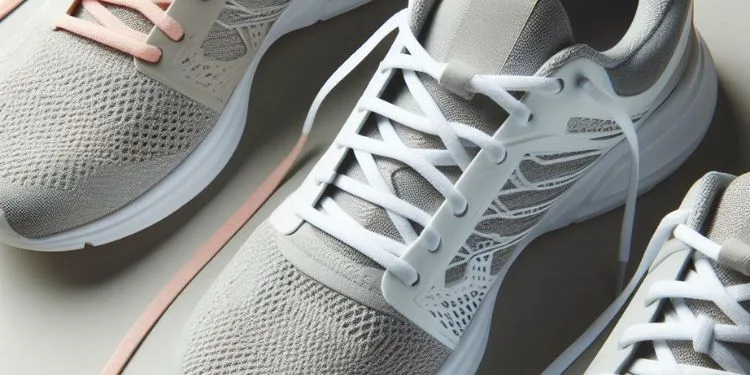
Proper lacing techniques can ensure comfort and maximize the durability of your running shoes. Learning how to lace running shoes effectively is a skill that will serve you well, whether you’re running a marathon or squeezing in a five-minute run. Here are some tips for lacing running shoes tailored to provide comfort and extend the lifespan of your running shoes.
Firstly, lacing your shoes anew each time you wear them, rather than slipping them on and off constantly, can help maintain the shoe’s structure and prevent premature wear on the heel counter. This simple practice ensures that the foot is comfortably secured in the shoe each time, reducing the risk of potential strain or injury. Single Diagonal Lacing is an excellent technique to relieve toe pain. This lacing schema crosses over the top of the shoe’s tongue in a single diagonal pattern, giving the toes plenty of room, thus relieving toe pain.
Another method is the Lydiard Lacing, which can reduce top foot pressure. Named after the famous New Zealand running coach Arthur Lydiard, this technique offers a broad, uniform lace structure.
| Lacing Technique | Purpose | Method |
|---|---|---|
| New Lacing Each Time | Maintains shoe structure and reduces wear on the heel counter | Replace shoes each time they are worn |
| Single Diagonal Lacing | Relieves toe pain | Cross the laces over the top of the shoe in a single diagonal pattern |
| Lydiard Lacing | Reduces top foot pressure | Use a vast, uniform lace structure |
Your shoes are integral to your running experience, so you must take good care of them. Remember, it’s worth spending a few extra seconds perfecting your shoe lacing if it helps you avoid injuries and prolong the life of your running shoes.
“Read more: Running Shoes for Hiking: Rugged and Reliable best trail running shoe“
Caring for Your Running Shoes and When to Replace Them
A cornerstone of effective running is the quality and durability of your gear, with your running shoes playing a significant role. How long do running shoes last? Ideally, premium running shoes should withstand between 300 and 500 miles of use. This typically translates to about four to six months of wear for a runner logging 20 miles weekly. However, this can vary depending on the shoe brand, running style, and terrain.
Proper shoe care is vital in prolonging the lifespan of your running shoes. This includes regular maintenance such as occasionally untying and retying your shoes. This practice maintains the shoe’s structure and reduces unnecessary strain on essential areas like the heel counter. Contrary to the habits of many runners, constant slipping on and off your shoes without untying can lead to premature wear — a common pitfall you can easily avoid.
Recognizing when to replace your footwear is crucial to avoiding running-related injuries and maintaining optimum performance. After all, a worn-out pair of shoes can cause more harm than good. Additionally, understanding how to choose running shoes that best suit your needs and gait is essential when it’s time for an upgrade. Expert advice can substantially make a difference in your shoe selection and overall running experience.
In conclusion, prioritizing the care of your running shoes and carrying out regular maintenance can significantly extend their lifespan. Moreover, being mindful of when to replace your gear and how to select the right pair are integral to your running performance and comfort.
“Read more: Running Shoes with Breathable Material: Choices best breathable shoes for Sweaty Feet“
Altra Lacing Method: A Comprehensive Guide
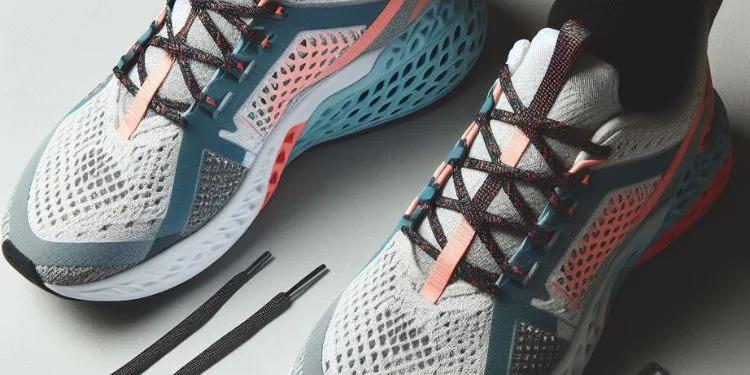
Running Shoes Lacing Techniques are crucial to achieving optimal fit and comfort. The Altra Lacing Method stands out for its unique approach among the various running shoe lacing methods. This method focuses on creating a secure fit that adapts to the natural movement of your foot during a run. It involves a specific running shoe lacing pattern that reduces pressure points and enhances stability.
The Altra Lacing Method is more than just a running shoe-tying technique; it’s a way to transform your running shoes into an extension of your foot. You can discover the best method by understanding different shoe-lacing patterns for running and experimenting with various shoe-lacing techniques for runners. Lacing and tying your running shoes can significantly impact your running performance. So, don’t overlook the importance of mastering running shoelaces and shoe-tying methods for runners. Your feet will thank you!
“Read more: Running Shoes Brooklyn: Shop the best brooklyn running company“
Mastering the Art of Lacing Running Shoes
Running Shoes Lacing Techniques are an integral part of any runner’s toolkit. Mastering the art of lacing your running shoes can improve your running experience. Each shoe’s design and the runner’s unique foot shape require a specific lacing technique to ensure optimal fit and comfort. Each method serves a purpose, from the traditional cross-lacing to more complex running shoe lacing patterns.
Whether it’s to alleviate pressure on a sensitive area, secure the heel for a snug fit, or adjust the shoe’s tightness across the foot, these techniques can make a difference. The right knot can secure the shoelaces, ensuring they don’t come undone mid-run. Remember, your running shoes are more than just sneakers; they’re your athletic companions, designed to support you on every run. So, take the time to explore different lacing techniques, find the one that works best for you, and transform your running experience.
“Read more: Running Shoes Walmart: Athletic Sneakers for Men and Women at walmart.com“
Lydiard Lacing Technique: A Closer Look
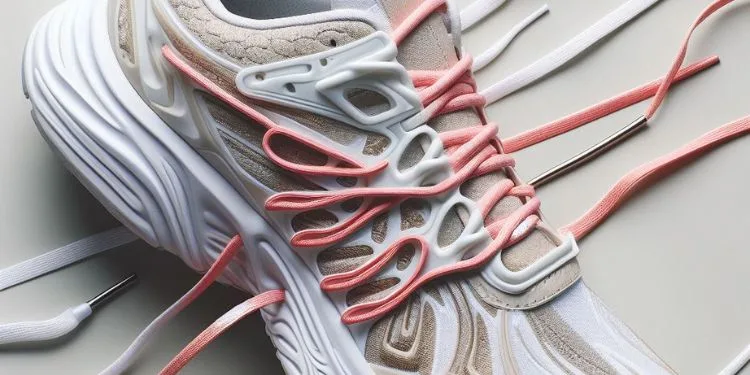
Running Shoe Lacing Techniques are vital to reaching optimal fit and comfort. Among these techniques, the Lydiard Lacing Technique stands out for its unique approach. This method, also known as the marathon lacing technique, is named after Arthur Lydiard, a renowned running coach. It’s particularly beneficial for runners who experience discomfort or numbness due to narrow shoes.
The technique involves tying running shoes to reduce pressure on the top of the foot, enhancing comfort during long runs. It’s similar to the Altra lacing method and is often considered Altra’s best shoe-lacing technique. Another popular method is the heel lock lacing running shoe technique, which ensures a secure fit and prevents heel slippage. The heel lock runner’s knot lacing technique is a variant of this.
Whether you’re using New Balance lacing techniques or exploring shoe lacing patterns for running, remember that the goal is to ensure your running shoes are tied in a way that provides maximum comfort and support. So, consider trying the Lydiard method or heel lock next time you lace up for a more comfortable run.
“Read more: Running Shoes Store Near Me: Best Running Gear for Every Runner’s Walk and Run“
The Science Behind Running Shoe Lacing Techniques
The science behind Running Shoe Lacing Techniques is fascinating and rooted in biomechanics. Each lacing method optimises the shoe’s fit, reduces pressure points, and accommodates the runner’s foot’s unique shape and movement. For instance, techniques like the Lydiard or Heel Lock Lacing are engineered to address specific issues such as foot numbness or heel slippage. These methods alter the tension distribution across the shoe, enhancing comfort and performance.
Moreover, the science extends to the material of the laces themselves. Elastic laces, for example, can provide a more adaptive fit, accommodating the natural swelling of the feet during a run.
In essence, the science of shoe lacing is about creating a harmonious interaction between the foot and the shoe. It’s about ensuring that every stride you take is as comfortable and efficient as possible, paving the way for optimal running performance.
“Read more: Running Shoes for Cross Country shoe: Choosing the Best Spike for Your Marathon Sports“
New Balance Lacing Techniques: What You Need to Know
New Balance Lacing Techniques are designed to enhance the fit and comfort of your running shoes. These techniques consider the unique design and structure of New Balance shoes, ensuring that they provide optimal support and fit for your feet. One popular method is the cross-lacing technique, which is ideal for runners with a high instep or wide feet. This technique reduces pressure on the top of the foot, providing a more comfortable fit.
Another technique is the parallel lacing method, also known as “Lydiard lacing” or “straight lacing”. This method is perfect for runners who encounter numbness or discomfort due to tight lacing. It allows for a looser fit around the top of the foot, reducing pressure points and enhancing comfort.
Remember, these lacing techniques aim to ensure that your running shoes are linked in a way that supplies maximum support and comfort. So, whether you’re a seasoned runner or a beginner, these New Balance lacing techniques can help you achieve a more comfortable and enjoyable run.
Conclusion
Running Shoes Lacing Techniques are more than just a way to secure your sneakers. They’re an essential part of your running gear, a technique that can significantly affect your comfort and performance. Whether it’s the traditional cross lacing, the secure lock lacing, or the customized gap lacing, each method has its unique benefits. The proper lacing technique can ensure your running shoes fit like a glove, reducing the risk of blisters and providing optimal foot support.
Remember, your shoelaces are an accessory and a tool to enhance your run. So, the next time you lace up your running shoes, consider trying a new lacing technique. You might be surprised at the difference it makes. After all, the perfect knot can lead to the perfect run. Happy running!


